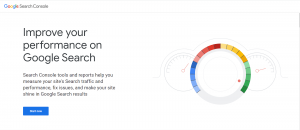— August 27, 2019

Late August gives me an itch. Or a disturbance in the Force. Whatever floats your personal boat.
It’s that end of summer / start of school thing. I’ve always been a bit conflicted about this time of year because when I was a child, I loved the freedom of summer holidays and also (shh, secretly and rather shame-facedly) rather relished the structure and hope of new opportunities presented by the new school year. So here I am today, with my sadness at the loss of summertime freedom to meet and play out with my family and friends, to relax and let my mind roam, and anticipation for the structure of the September back-to-work and joys and structured dynamism of client work.
The great thing is that I get the sense I’m not alone in having a dual relationship with this time of year, even though this year in the UK, late August has a very odd pre-Brexit vibe.
(September 01, 2019), I met up with the CEO of a large SME. When I last saw her in late June she was, frankly, looking drained and depleted. (September 01, 2019), she was positively buzzing and full of enthusiasm for the ideas that the summer break had allowed her to generate; looking forward to sharing her zest and passion with her colleagues. She wanted to talk about her company culture and how to ‘change the culture to take the people with her’.
It’s great she’s so buzzing and she’s right to ask the question; culture is unbelievably powerful. It defines what and how work actually gets done so, naturally, those bubbling with enthusiasm for the return to work and the can-do phase want to bring their company along with them. In the field of organisational psychology that I work in, Transactional Analysis, there is a simple yet powerful way of looking at culture.
DNA OF CULTURE MODEL
The concept is that culture is an output of the interplay between the ‘structures’ within a company and the ‘dynamics’ of the people within it. By structures, I’m not talking of the buildings or space, although these are included, I’m primarily talking about tangible things like organisation charts, policies, documented procedures, appraisals, training, job descriptions, etc. Stuff you could put your hand on, should you so desire. Dynamics looks at how people behave in the company.
Structures heavily influence how we behave. Think about it, if you’re asked to clock-in to the factory and you’re paid based on your time on shift, you’re more likely to be on time. Or if you’ve never been trained to do the role you’ve been promoted to, once the congratulations and excitement are over, the anxiety and over-compensating behaviours based on your fears of inadequacy can make you ‘different’ from how you were before.
This is how culture gets formed. What and how we organise, measure, reward, penalise, and so on, which influence behaviour – ‘getting things done around here’ – which in turn impacts the policies & procedures, and so the loop goes on. Culture forms.
To change culture, you need to do more than model good behaviours. You need to identify existing tangible ‘stuff’ then consistently and fairly implement the new structures – policies, procedures, etc that will influence behaviour and, in time, change culture.
Yes, despite the naysayers and doom-mongers who try to tell me that you can’t change a company culture, er, yes you can. It may not be something done at lightning speed just because the leadership wants/states they want it done, or provide instant gratification, but you can change culture. And that’s the programme I’m now working on with my reinvigorated client CEO. She and I are working on identifying just what’s driving the key structures and dynamics in her company.
We’re scratching the August itch.
PS. Leadership in forming and changing culture is so screamingly important. Leaders set the tone, model the acceptable behaviours and install the policies and procedures that structure the business. Leaders also have to take the, er, nonsense that gets flung at them psychologically. My next ruminations will be about the power, importance and challenges of leadership.
Business & Finance Articles on Business 2 Community
(57)








